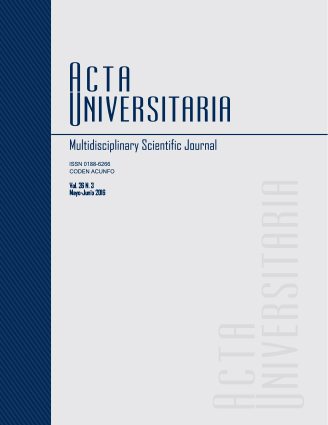Impact of nearby urban nature on the of outdoor safety perception: evidence from Mexico City’s Metropolitan Area
Published 2016-07-11
Keywords
- Green spaces,
- public safety,
- social ecology.
- Áreas verdes,
- seguridad pública,
- ecología social.
How to Cite
Abstract
Recent research indicates that presence of green spaces (GS) in urban areas is important to mitigate lack of public safety. This study documents application of a social ecological model of impact of nearby urban nature (NUN) on outdoor safety perception. Through a purposeful sampling process, 120 people (mean age 45.73 years, 63 men and 57 women) were interviewed in their homes in a community of the Mexico City Metropolitan Area. In a uniform evaluation and informed consent protocol, a team of observers and co-observers assessed variables of the model: NUN (Presence of Nature in the Home scale and proximity to outdoor GS), Psychological Transaction Processes with the Environment (Transactions with Nature scale and frequency of visits to local green spaces), and outdoor public safety perception (diurnal and nocturnal). A structural modeling analysis proved that: a) NUN (proximity to GS) had positive effect on visits frequency to the GS; b) GS’s visits frequency had a mediating role on the relationship of proximity and nocturnal perception of outdoor public safety; and c) NUN positive impact on outdoor public safety perception.
References
Altman, I. (1975). The environment and social behavior. Monterey, CA: Brooks/Cole.
Appleton, J. (1975). The experience of landscape. London: Wiley.
- doi:10.1016/j.socscimed.2004.06.036
Jeffrey, R. (1971). Crime prevention through environmental design. Beverly Hills, CA: Sage.
Newman, O. (1972). Defensible space. Crime prevention through urban design. London: MacMillan.
Sigma dos México (SIGMA) (2009). Estudios de Mercado. Recuperado de http://www.sigmados.com.mx
Warren, D. (1981). Helping networks. Notre Dame, IN: University of Notre Dame Press.

